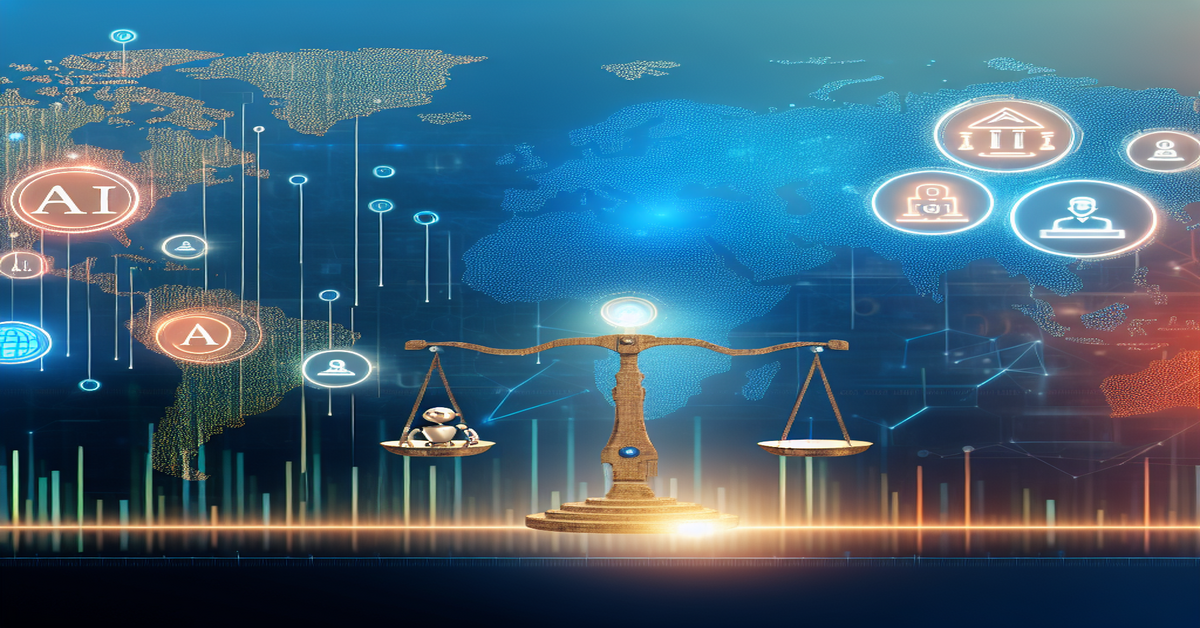Measuring the Global Impact of AI: Insights from the Anthropic Economic Index
The rapid advancement of artificial intelligence (AI) is transforming industries and economies worldwide. But how do we quantify the adoption and impact of AI across different countries and sectors? Enter the Anthropic Economic Index, a groundbreaking metric that sheds light on the global AI landscape. In this blog post, we’ll dive into the key findings of this index and explore what they mean for the future of AI.
Global AI Adoption: A Tale of Two Worlds
One of the most striking revelations from the Anthropic Economic Index is the uneven distribution of AI adoption across the globe. While countries like the **United States**, **China**, and those in **Western Europe** are leading the charge in AI usage, other regions are lagging behind. This disparity highlights the need for increased investment and education in AI technologies to ensure that the benefits of this transformative technology are shared more equally.
Industry Insights: Where AI is Making the Biggest Impact
The index also provides valuable insights into how different industries are leveraging AI. It comes as no surprise that the finance, healthcare, and technology sectors are among the most advanced in terms of AI adoption. These industries have been quick to recognize the potential of AI to streamline processes, improve decision-making, and drive innovation.
For example, in the finance sector, AI is being used to detect fraudulent transactions, personalize investment advice, and automate complex financial analysis. Meanwhile, healthcare organizations are harnessing AI to improve patient outcomes, streamline clinical workflows, and accelerate drug discovery. As AI continues to mature, we can expect to see even more transformative applications emerge across various industries.
The Economic Impact of AI: A Double-Edged Sword
The Anthropic Economic Index reveals a strong correlation between a country’s GDP and its level of AI adoption. Economically advanced countries tend to be the ones investing heavily in AI research and development, and as a result, they are reaping the benefits in terms of increased productivity and competitiveness.
However, the index also highlights the potential job displacement caused by AI automation. As machines become capable of performing tasks previously done by humans, there is a risk of job losses in certain sectors. At the same time, the index suggests that AI is creating new job opportunities in fields related to AI development, deployment, and maintenance. Striking the right balance between automation and job creation will be a key challenge for policymakers and business leaders in the years ahead.
The Global AI Race: Who’s Leading the Pack?
When it comes to AI adoption, the United States is currently leading the way, thanks to its vibrant tech industry and significant investments in AI research. However, China is quickly closing the gap, driven by strong government support and a thriving ecosystem of AI startups. In Europe, countries like the United Kingdom, Germany, and France are also making significant strides in AI development and deployment.
As the global AI race heats up, it will be interesting to see how different countries and regions position themselves to capitalize on the opportunities presented by this transformative technology. Will we see increased collaboration between nations, or will competition drive innovation forward? Only time will tell.
The Future of AI: Challenges and Opportunities
Looking ahead, the Anthropic Economic Index paints a picture of continued growth in AI adoption across various sectors and regions. As AI technologies become more sophisticated and accessible, we can expect to see even more innovative applications emerge, transforming the way we live and work.
However, the rapid pace of AI development also raises important questions about the ethical implications of this technology. How do we ensure that AI is developed and used responsibly, with appropriate safeguards in place to prevent misuse? How do we address concerns around privacy, bias, and transparency? These are complex challenges that will require ongoing dialogue and collaboration between technologists, policymakers, and society as a whole.
Despite these challenges, the potential benefits of AI are immense. From improving healthcare outcomes to accelerating scientific discovery to driving economic growth, AI has the power to transform our world for the better. By staying informed about the latest developments in AI and engaging in constructive dialogue about its implications, we can work together to shape a future in which the benefits of this technology are shared by all.
#ArtificialIntelligence #EconomicIndex #GlobalImpact
-> Original article and inspiration provided by Michael Nuñez
-> Connect with one of our AI Strategists today at Opahl Technologies


